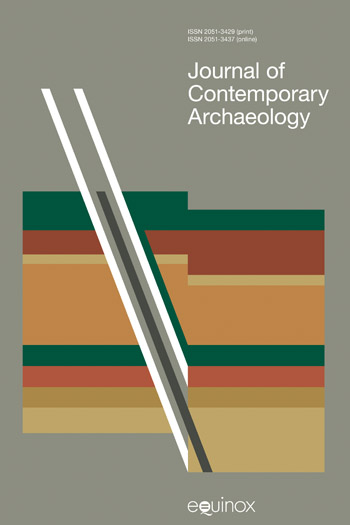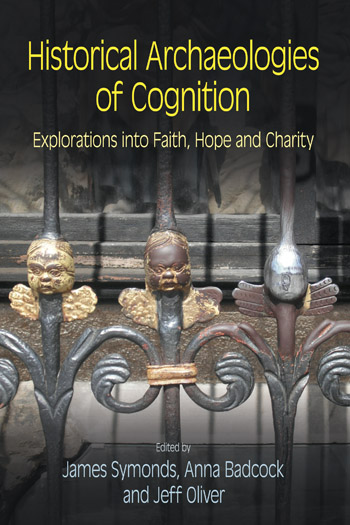Reviews
A majestic work, full of experiment and sensuous detail. Equally haunting, melancholic, and amusing: a narrative tour-de-force. Hein Bjerck writes with a unique voice, evoking place, people, and emotion with affect seldom, if ever, found in archaeological or historic text. Part love-letter to his father, uncle, and his own past, part meditation on objects, things, memory, humanity, relationships, and the passage of time, Archaeology at Home exceeds the boundaries of any one discipline. An instant classic.Professor Doug Bailey, Department of Anthropology, San Francisco State University
We are being convinced that the future of archaeology lies in technology, but the future of archaeology lies in imagination: our capacity to recreate other pasts, other futures and other ways of telling them. In this fascinating book, Hein Bjerck tells us about 9,500-year old houses and his own family’s homes and explores in an original way memory, materiality and experiences of domesticity that are at the same time intimate and remote. In so doing, he shows us the path to a new kind of archaeology: one that is tremendously creative and full of emotion, an archaeology that mixes past and present, the social and the personal, self and others, science and narrative. This book will be essential reading for anybody interested in the archaeology of the contemporary past, the archaeology of domestic space and new forms of storytelling in the humanities and the social sciences.
Alfredo González-Ruibal, Institute of Heritage Sciences (Spanish National Research Council)
It is a deep and moving book, that seems to begin as a funny challenge: may an archaeologist do an archaeology of his/her own home? Far beyond family chronicles, Bjerck has written a remarkable and sensitive essay on things, life and time, seen from inside.
Professor Laurent Olivier, Curator in chief, Musée d'Archéologie nationale, Saint-Germain-en-Laye, France
Archaeology at Home is a book that causes us to stop and think, to re-evaluate our practise and approach both collectively and individually, a book that challenges archaeologists to do what we do better. In a masterful blend of contemporary archaeology and early prehistory, Bjerck breathes life into the past and its fragments of humankind. This book asks us to re-position ourselves in archaeological interpretation and narrative, to ‘write from somewhere’, and to consider how the lives we live can inform the lives lived in the recent and distant pasts. It is a book about relationships: between the past and present; between humans and non-humans; between worlds; between memory and the tangible; between lost and found. Archaeology at Home is inspiring, thought provoking and evocative. It also contains an ingredient rarely found in archaeological writing and research – humour.
Dr. Marion Dowd, Lecturer in Prehistoric Archaeology, Institute of Technology Sligo
In 1790, a young writer locked himself at home to study the wonders of what lay closest by. The resulting account, 'A Journey Around My Room', now holds renewed significance following two years of a Pandemic confining many of us to home. During my confinement, I started to wonder what an excavation of my own life might reveal - what I might learn about myself that I hadn't otherwise realised. But my entangled domestic mess remains untouched, for now. I am therefore both envious and admiring of Archaeology at Home, an eloquent and close encounter which stands as a modern day 'Journey', not around a room but of a life, or lives to be precise. The work is unashamedly and unmistakably an archaeology book, reflecting on people's stories told through the itineraries of material objects, places and landscape. In a unique and highly readable account, the author reveals what all archaeologists know but others may not - that archaeologists make the best story-tellers and that our stories will be contemporary and they can be deeply intimate. And aren't those stories always the best?!
Professor John Schofield, Archaeology, University of York
This is a book that addresses one of the deepest paradoxes of archaeology: its desire, on the one hand, to understand and re-connect with past human lives and on the other, the realization “that most of what relates to being a human in the past are outside the fragments of our archaeological record”. What do you do when faced with such a paradox? Pretend it doesn’t exist and carry on as before, trying to overcome the limitations of the archaeological record? Or accept that archaeology has the potential to be something else? In this book, Bjerck bravely chooses the second option. Drawing on the wide field of new materialisms, symmetrical archaeology and a machine-oriented ontology, he explores three ‘homes’ as case studies: his late father’s; an uncle’s house consumed by flames; and a Mesolithic camp. For Bjerck these homes are best seen as thing-regimes, special human-thing collectives. But what makes his approach unique is his personal connection to all three sites. This is an object-oriented ontology with a human face. Ultimately, what makes Bjerck’s solution to the paradox so compelling is that even if past lives will always elude our grasp, the situated nature of our own engagement with these remains ensures that the human dimension in this object-oriented world is never lost. It is what frames everything; these homes take on the contours they have, precisely because Hein Bjerck is part of them, he is writing from a position fully immersed within these thing-regimes. As he himself describes it, this is a kind of auto-archaeology; but it is also more. This is also an exercise in archaeology as memory, and as we read it, we realize we are not just visiting three homes, but also, in a way, returning home.
Professor Gavin Lucas, Archaeology, University of Iceland
I cosied up to the wood-burner to read Archaeology At Home and Bjerck transported me to his part of the world, generously showing me all sorts of precious ordinary things, from antiquity to the recent past. He made me laugh and feel sad in equal measure. He made me think about things, life and time from new entanglements.
Journal of Contemporary Archaeology
Ultimately, this is a thought-provoking book in a number of ways, contributing to contemporary archaeologies and Mesolithic archaeologies and to discourses about archaeological writing and speculative realism, and in doing so framing homes as a nexus of relationships between humans, things, time and memories. Whether the home is that of Bjerck’s father or Uncle, that of Mesolithic hunter gatherers or a newly rebuilt dwelling of post-medieval Highlanders, Archaeology at Home provides a helpful way in, to open up our thinking about homes, their things and their temporalities in a creative and productive manner.
Norwegian Archaeological Review
Like a good party, the book contains stories that will make you laugh, and stories that may make you cry. It is at once both intimate and spacious. Hein compiles stories from past and present. He writes about childhood carpet dens, about what Satan's bookshelf would look like, about a dream he had about Tom Cruise, about trying to impress Elin Andreassen in Svalbard, and how he imagines a Stone Age man’s encounter with the modern world. It's a deeply personal book, that allows for an equally personal review.
Viking








